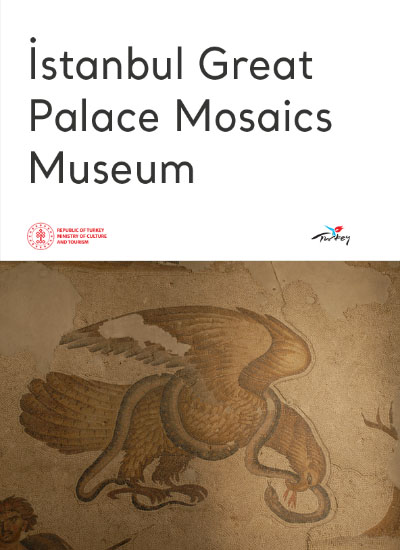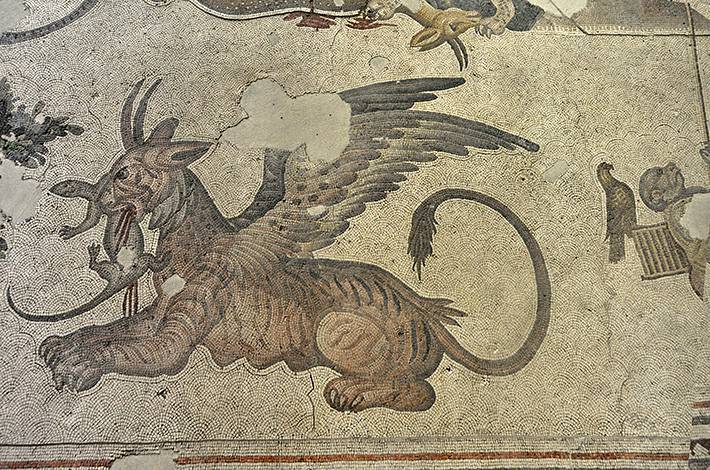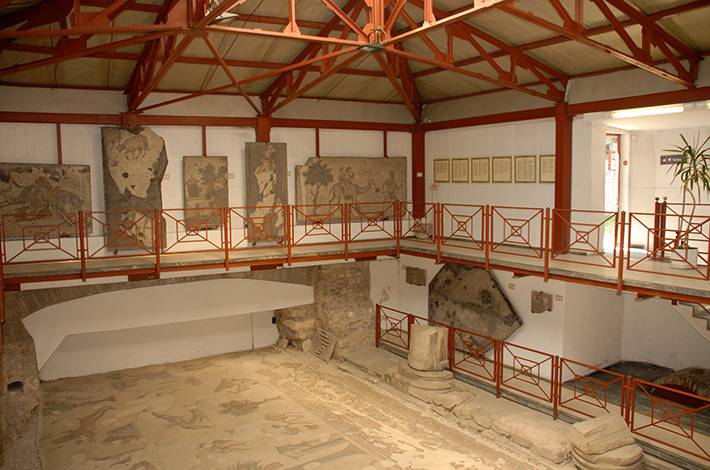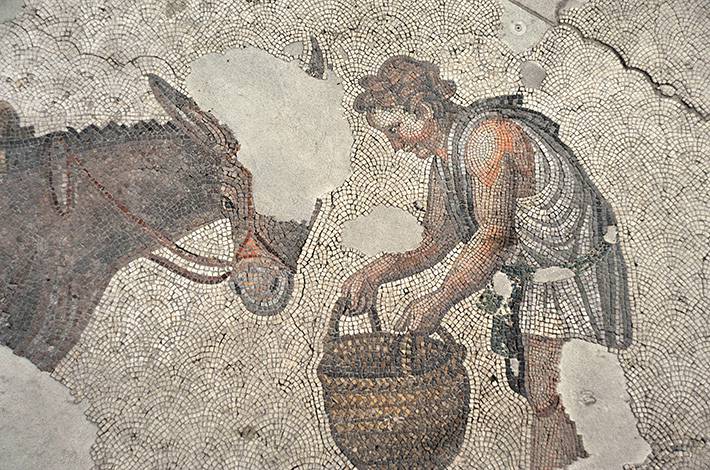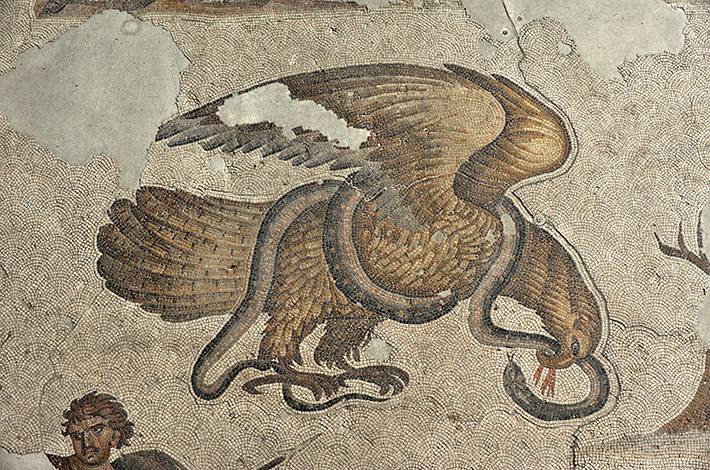Home Of Everyday Life, Nature And Mythology Mosaics The mosaics discovered in 1935 in the northeastern section of the porticoed courtyard of the Eastern Roman Great Palace are marvellous both for their artistic quality and for the richness of the scenes depicted. The mosaics exhibited in the Great Palace Mosaics Museum are dated between 450-550 A.D. The depictions of daily life, nature, and mythology are vivid, likely due to the collaboration of many master artists under the direction of leading masters of the era. The museum is situated in the Arasta Bazaar within the complex of the Blue Mosque. It was intentionally created here to include the partially intact mosaic pavement of the northeast part of the porticoed courtyard of the Great Palace of the Eastern Roman period. Only 180 square metres of the mosaic area have survived to the present day. Lizard Eating Griffon Or The Goat Milking Man Mosaics The mosaics are made of limestone, terracotta, and colored stones with tesserae approximately 5 mm in size. The white marble parts on the background are arranged in a 'herringbone pattern', while depictions in the 'Opus Vermiculatum' style are placed between the marble pieces. The depictions are surrounded by contours. The museum's most striking mosaics depict various scenes, including a griffin eating a lizard, an elephant and a lion fighting, a mare breastfeeding her foal, children herding geese, a man milking a goat, a boy feeding his donkey, a young girl carrying a jug, bears eating apples, and a hunter fighting a tiger. In total, there are 150 human and animal figures and 90 different themes represented in the mosaics. While You’re Here… Be sure to visit the Sultanahmet Mosque! It was commissioned by Sultan Ahmed I and built in the 17th century by Sedefkar Mehmet Aga, one of Sinan the Architect's students. It is also known as the 'Blue Mosque' because of the 21 thousand and 43 eye-catching Iznik tiles on its walls. As Sultan Ahmed I was the 14th Sultan of the Ottoman Empire, the minarets have 14 balconies. The complex is one of the largest in Istanbul. The tomb of Sultan Ahmed I is also adjacent to the mosque garden.
Great Palace Mosaics Museums
